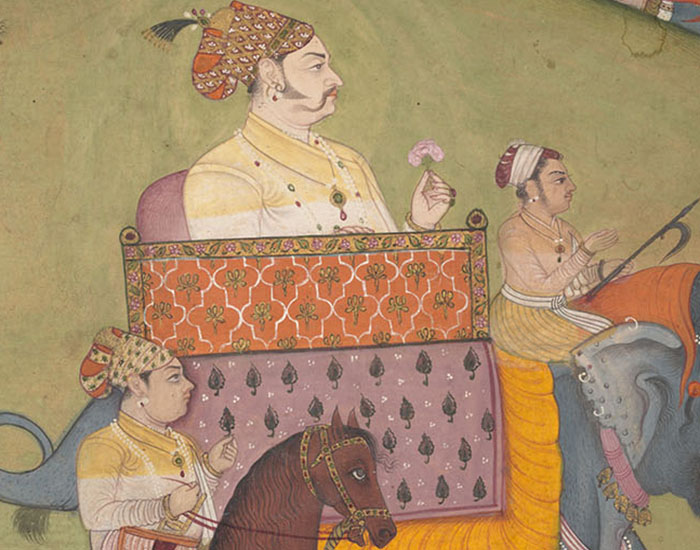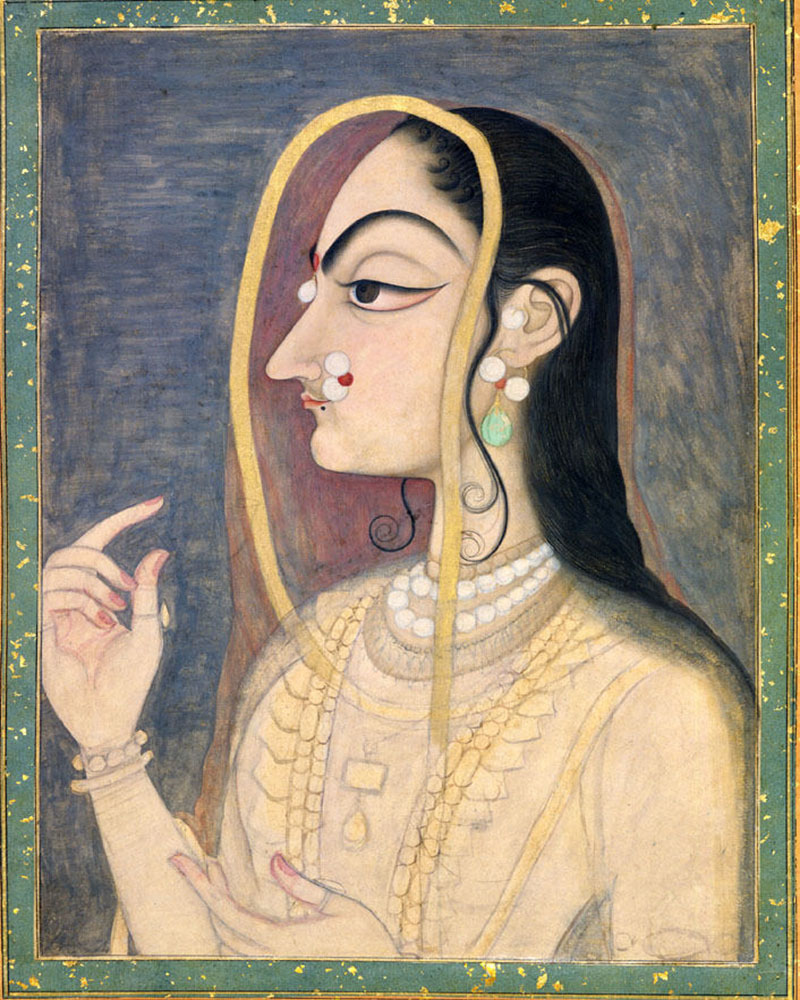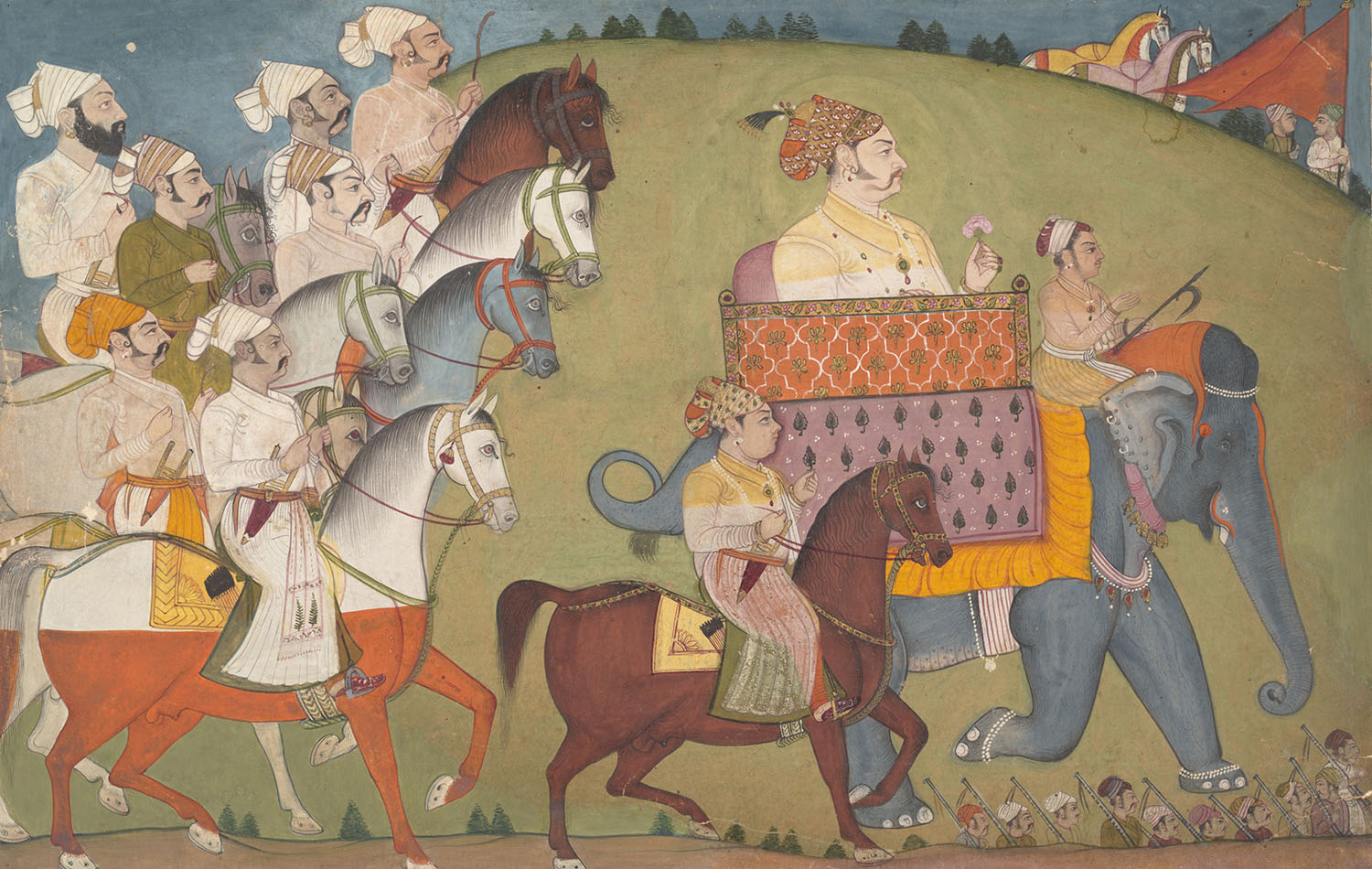Encyclopedia of Art > Articles
Nihal Chand

A master artist at the Rajput court of Kishangarh, Nihal Chand (also known as Surdhaj Nihal Chand) has been credited with the creation of the visual style that came to define the Kishangarh school of painting.
Nihal Chand was the great-grandson of Surdhaj Mulraj, who migrated to Kishangarh from Delhi in the second half of the seventeenth century and served as a diwan (minister) during the reign of Raja Man Singh (1658–1706). Nihal Chand’s grandfather and his father, Bhikchand, are also believed to have been artists by profession.
The most notable phase of Nihal Chand’s career as an artist was between 1735 and 1757. An important figure at the court in these years was Savant Singh – heir-apparent and ruler of Kishangarh for a brief period – who was known to be a devotee of Krishna and a writer of religious poetry. Under Savant Singh’s patronage, Chand is credited with creating a unique facial type that would become characteristic of the Kishangarh school. The use of this visual idiom – which comprised heavy-lidded eyes, arched eyebrows, and slender chins and noses – was limited to Radha, Krishna and a few gopis, indicating its status as an idealised representation. Some of his paintings illustrate episodes from the Bhagavata Purana and the poetry of Savant Singh, while others depict Radha, Krishna and the gopis in courtly settings.
Savant Singh’s ascension to the throne was marked by political strife with his brother, Bahadur Singh, and the former eventually abdicated as ruler in favour of his son, Sardar Singh. In 1756, the state of Kishangarh was split. Sardar Singh assumed control of the territory of Rupnagar and Nihal Chand was invited to work in the Rupnagar atelier, where he remained active until 1780. Nihal Chand’s sons, Sitaram and Surajmal, also went on to work as court artists at Rupnagar.
First Published: April 21, 2022
Last Updated: July 26, 2023



